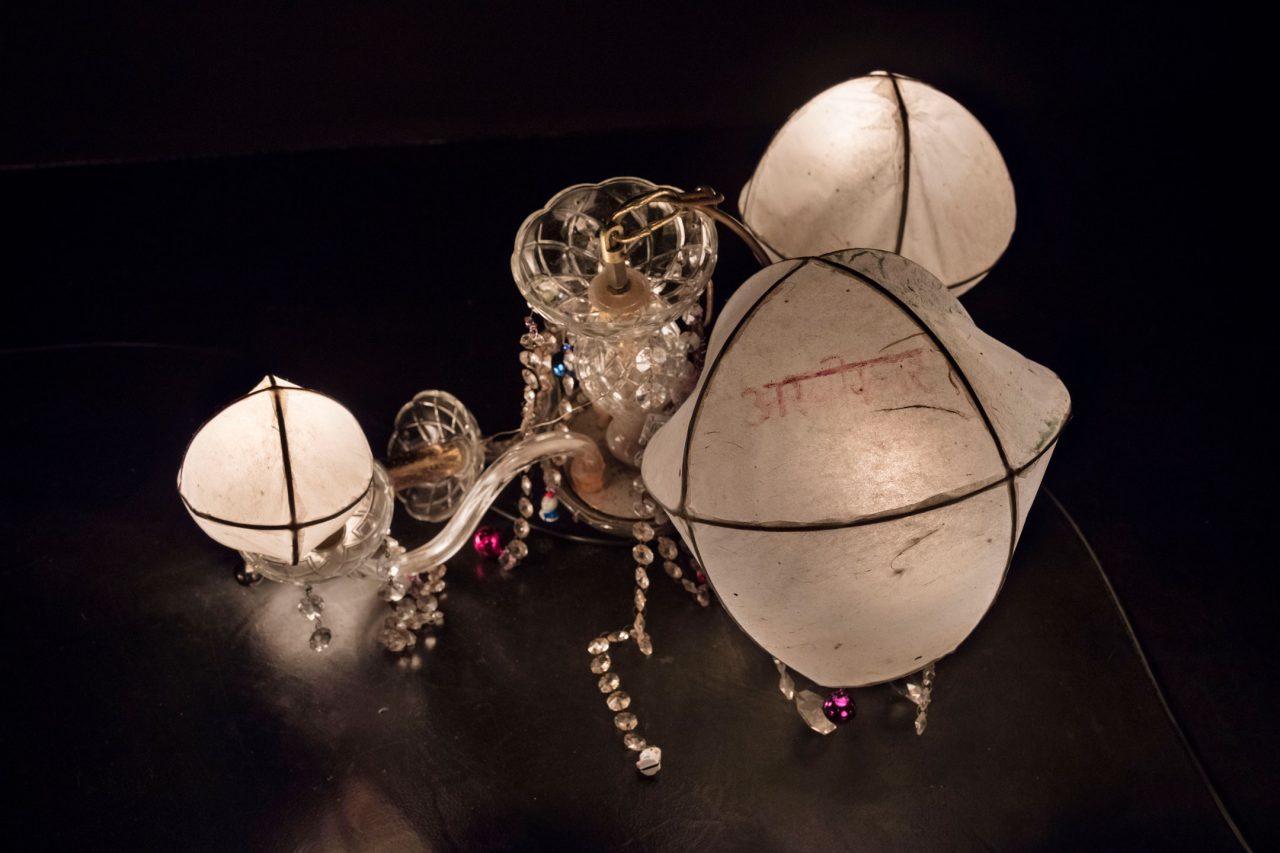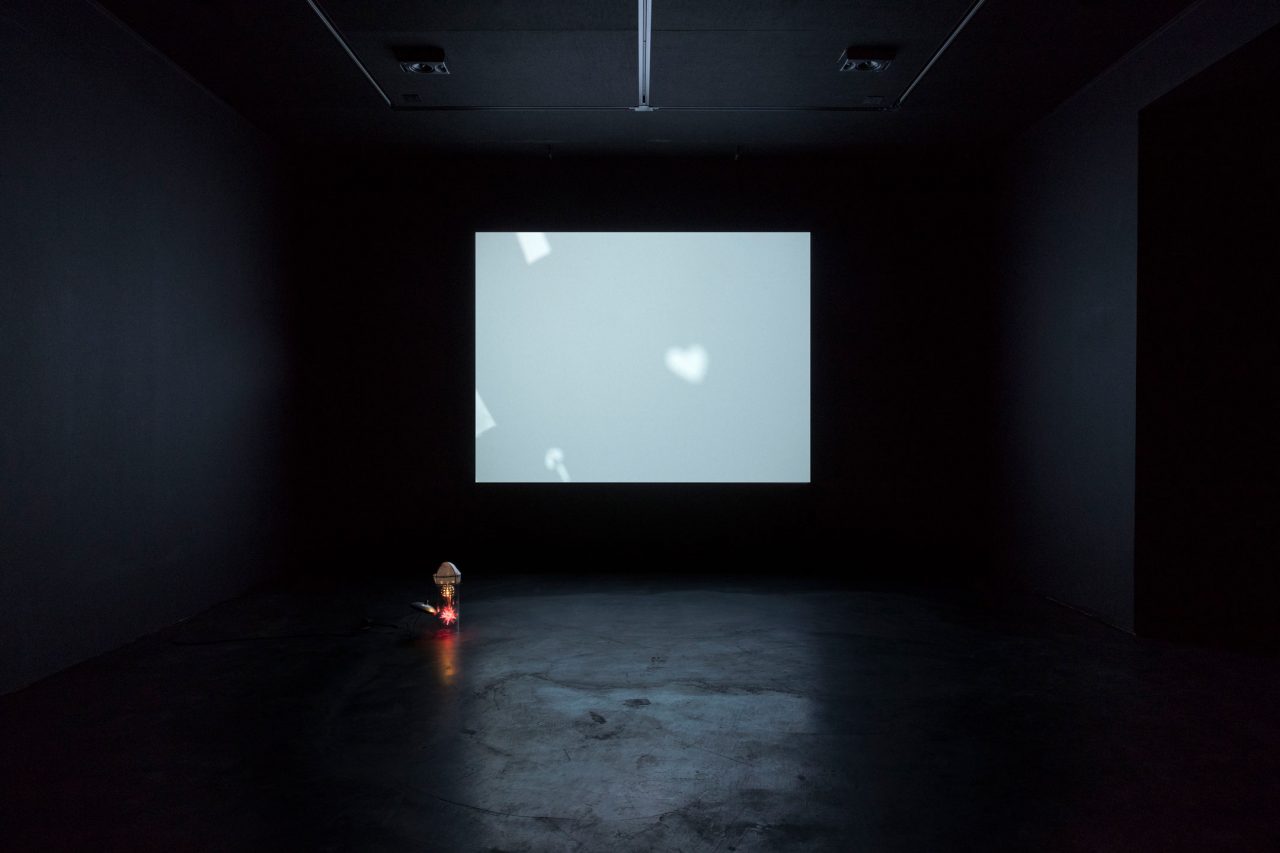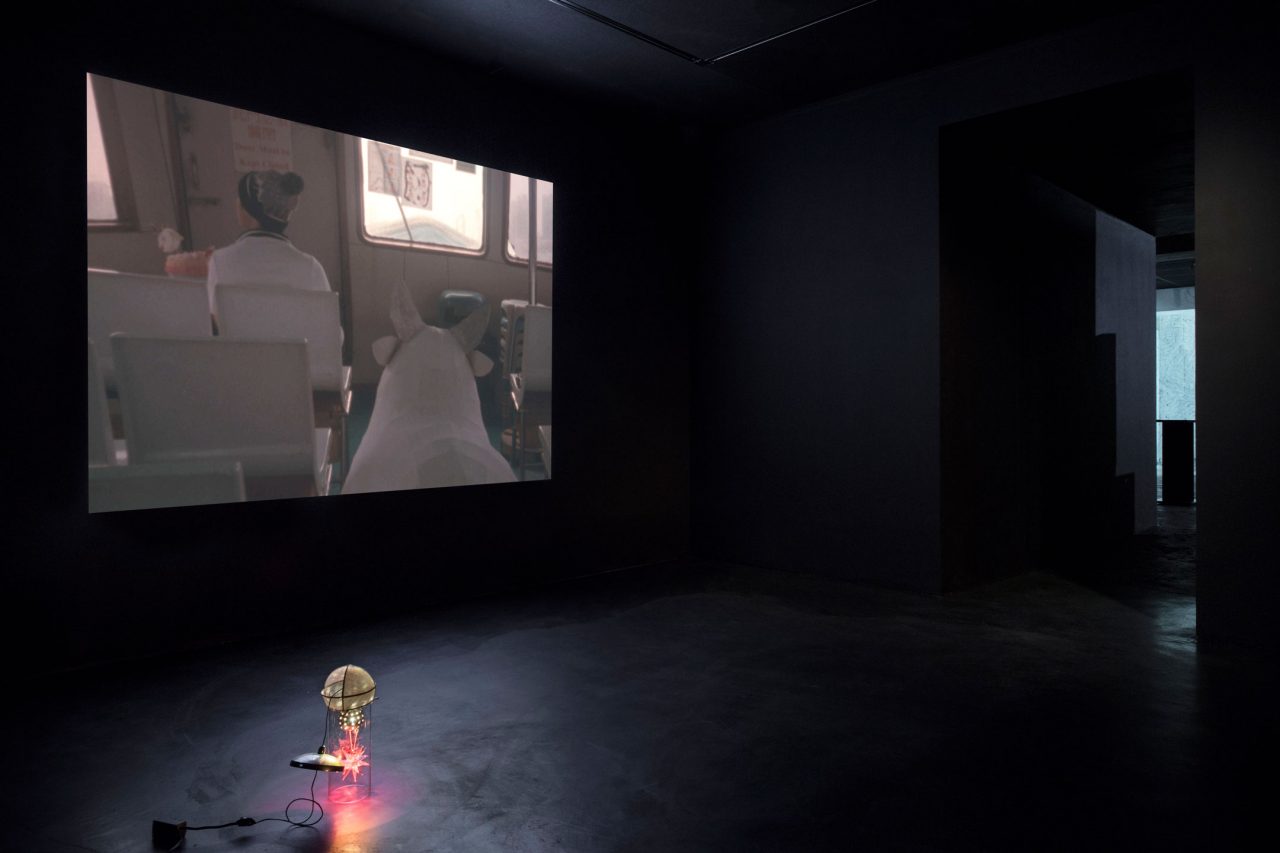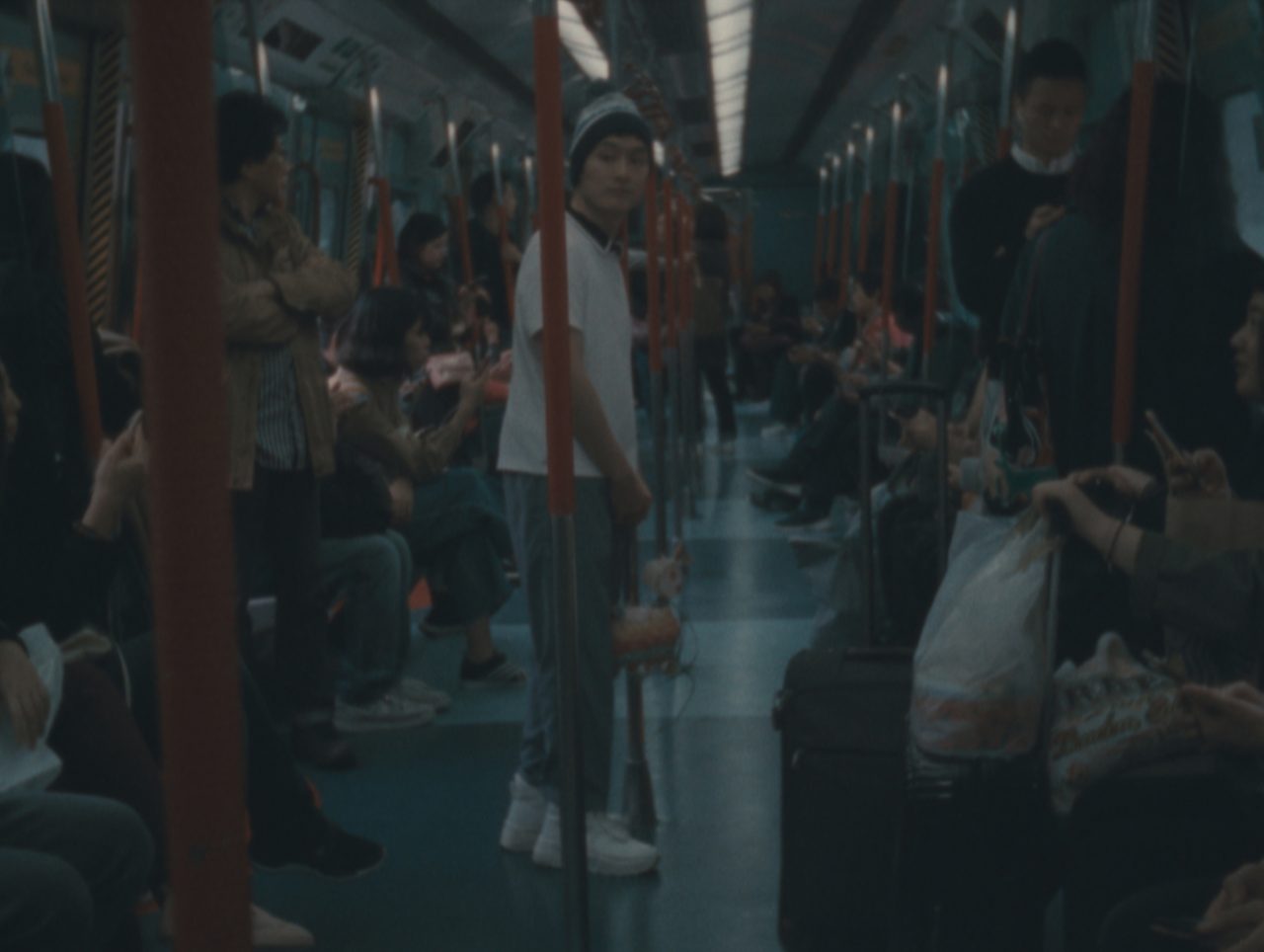未完成的歸途
武雨濛

Subtitle 01 (Justice and Hope), 2019
Paper, bamboo wire, glue, film prop lamps, bells, wire, raincoat, rabbit lantern, mineral pigment
Dimension Variable
Image courtesy of the artist and Empty Gallery.

Detail of Subtitle 01 (Justice and Hope), Cici Wu
Image courtesy of the artist and Empty Gallery.

Detail sof Subtitle 01 (Justice and Hope), Cici Wu
Image courtesy of the artist and Empty Gallery.

Detail of Subtitle 01 (Justice and Hope), Cici Wu
Image courtesy of the artist and Empty Gallery.

Detail sof Subtitle 01 (Justice and Hope), Cici Wu
Image courtesy of the artist and Empty Gallery.

Installation view, Cici Wu
Image courtesy of the artist and Empty Gallery.

Memory Cow (Mother), Subtitle 01 (One Side Different), Subtitle 01 (Forgotten to Forget), 2019
Image courtesy of the artist and Empty Gallery.

Detail of Memory Cow (Mother)
Paper, bamboo wire, glue, handkerchief, investigation report, photograph, raincoat, silicone
Image courtesy of the artist and Empty Gallery.

Detail of Subtitle 01 (One Side Different) and Subtitle 01 (Forgotten to Forget)
Paper, bamboo wire, glue, film prop lamps, bells, wire, raincoat
Image courtesy of the artist and Empty Gallery.

Unfinished Return of Yu Man Hon, 2019
Film prop lamp, paper, bamboo wire, glue, video (16mm transfer to digital, 18:35 min)
Dimension Variable
Image courtesy of the artist and Empty Gallery.

Installation view, Cici Wu
Image courtesy of the artist and Empty Gallery.

Installation view, Cici Wu
Image courtesy of the artist and Empty Gallery.

Unfinished Return of Yu Man Hon, 2019, still
Image courtesy of the artist and Empty Gallery.

Unfinished Return of Yu Man Hon, 2019, still
Image courtesy of the artist and Empty Gallery.

Unfinished Return of Yu Man Hon, 2019, still
Image courtesy of the artist and Empty Gallery.
這是不尋常的組合,兔仔燈籠和Bolex攝影機。當我把它們放在手上,一種奇異的親切感在它們之間瞬然而生。 它們透過光的機具與尋找的行動而連繫上⋯⋯
《未完成的歸途》是圍繞以下數樣想像回歸的展覽:
一個香港男孩在2000年經由羅湖邊境離開這個世界(失蹤男孩帶著精神力量的回歸)
二維電影空間(回歸到電影院的螢幕)
對公義的想像和敘述的新想望(公義的回歸)
香港論述(香港身份從非幽靈/非悲觀角度的回歸 )
兒童演員(成年童星繼續螢幕生命的回歸)
回到香港就像重返人世道。我在這裡研究時間感的差異;回想從前的慾望;觀察永恆之愛的意義;家庭犧牲;和徹底的抽身而去。我想每個人的生命中總會有一次『人世道』,而我的碰巧是這個島。
Empty Gallery 呈獻現紐約藝術家武雨濛在港的首個個展《未完成的歸途》。武雨濛的創作常開展自對於一套電影的同心感解構。 武雨濛重新想像這些現成敘述,並視之為一連串詩性的關聯物,她創作的類電影雕塑常以一種與電影蒙太奇等同的空間性並置現成物及創作品。
《未完成的歸途》由一段16米厘影片和一個組燈裝置組成,創作核心圍繞武雨濛近來對庾文翰這人物引起的文化想像研究:一個自閉症男孩在2000年8月24日由香港經羅湖口岸進入大陸然後失蹤。這懸而未破的失蹤案發生於1997年主權移交後不久,至今對不少香港人來說仍記憶猶新:是大陸-香港政府民官僚不義的例子,也是本地文化消失的象徵。武雨濛的展覽嘗試挑戰把文翰視為死亡和失去的化身這個既定詮釋,她提議我們可將他想像為天上的智靈而非鬼魂。
展覽的重點作品是武雨濛最新影片《庾文翰未完成的歸途》。影片在香港和明尼阿波利斯拍攝,擔演成年庾文翰的演員是因著楊德昌2000年的電影《一一》而為人所認識的台灣童星張洋洋。在畫廊中的呈現為一個循環播放的投映裝置,影片的靈感來自結構主義/唯物主義電影傳統中,把對電影的探索視為內在經驗的類推。《庾文翰未完成的歸途》以抽象敘事講述庾文翰回到現世,過程中尋回與自己失蹤相關的遺落記憶。武雨濛的鏡頭在城市無數的行人空間飄浮移動,而又徘徊於某些文翰感到份外親切的地方,鞦韆椅或喜歡的餐店、超級市場或巴士站、渡輪或街市。最終成了這包含著記憶的滲透力與脆弱性的影片,投映機下如光流瀉的影像則成了靈魂移動的隱喻。
《未完成的歸途》同時還包括一個新的組燈雕塑。在影片的尾聲出現,這些燈探索主體性的本質,將之視為零碎的、曾修補物件的家,而同時又偷偷地暗示著電影經驗中光的重要性 。武雨濛繼續其一直以來對於發光物的濃厚興趣,她這次在本地一間片場道具倉找來一系列舊燈。這些退役的工藝品在過去數十年曾經燃亮了無數低成本電影及電視製作,因此武雨濛的興趣即在它們同時作為記憶與影響存庫的狀態,依附在它們身上的不只是塵埃,還有從前觀眾的潛藏欲望。武雨濛的介入將這些燈轉化奇趣混雜的物件,喚起香港殖民往事的同時前望那還未下定義的將來。